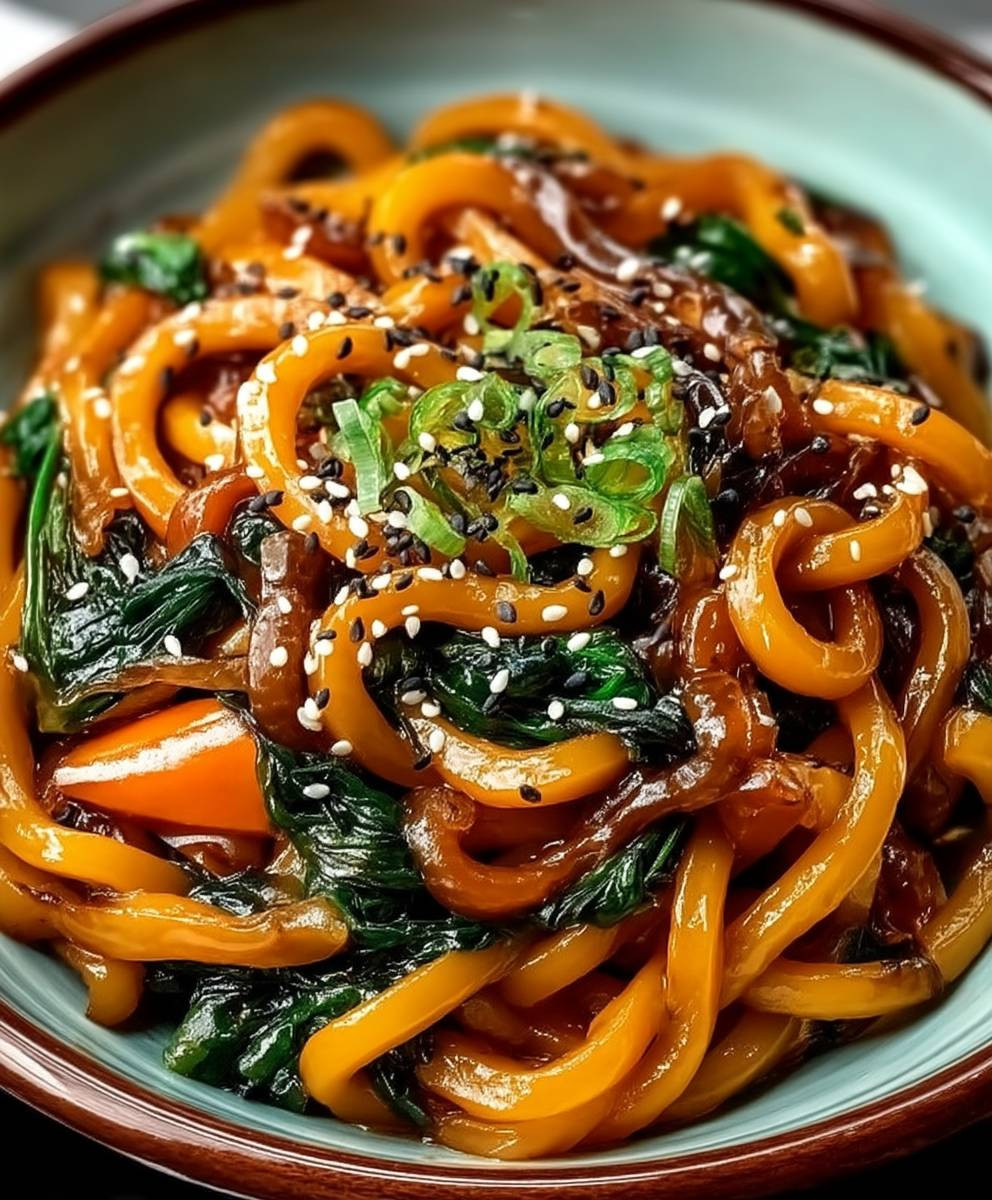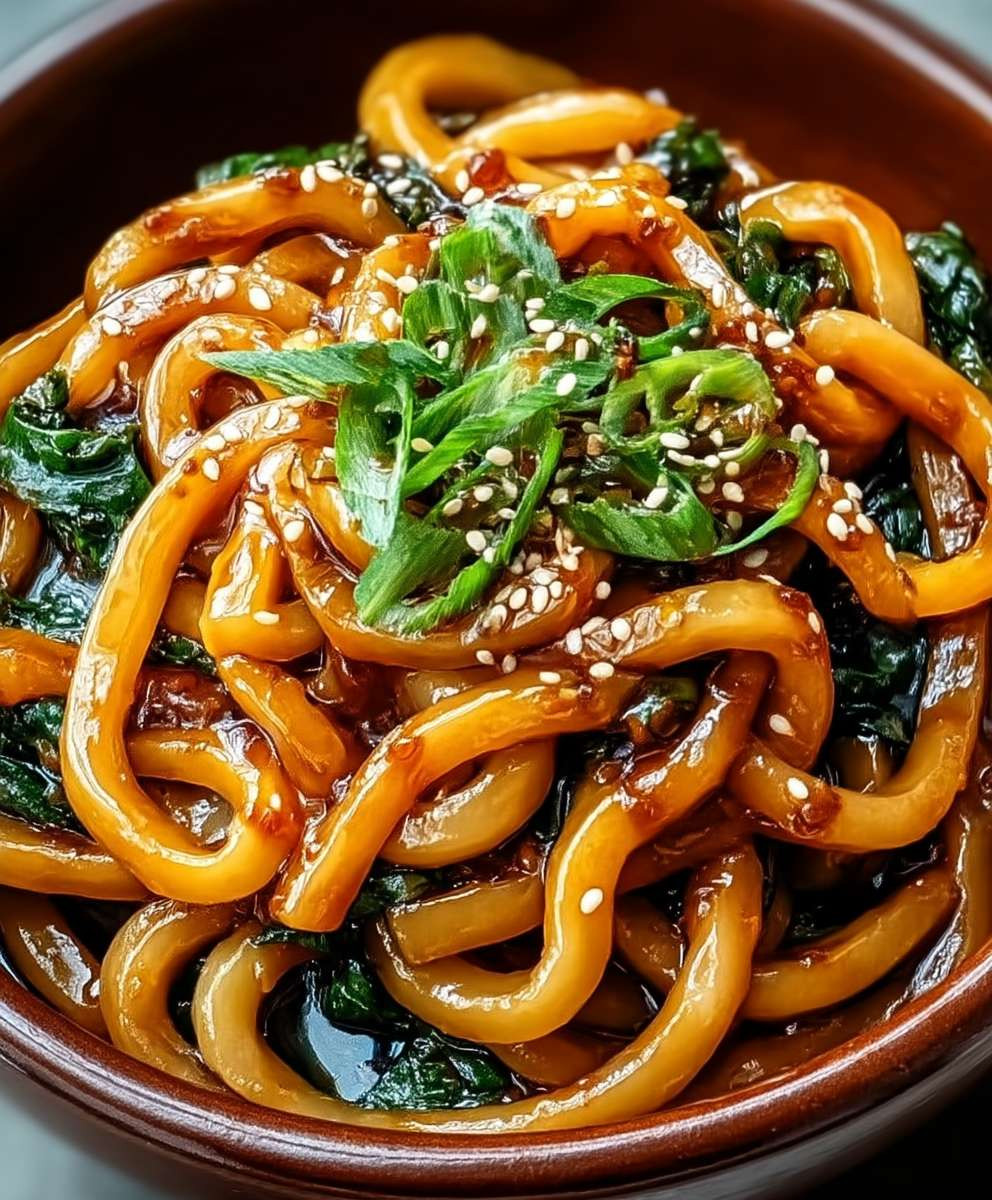Yaki Udon Noodle: Prepare to embark on a culinary adventure that will tantalize your taste buds and transport you straight to the bustling streets of Japan! Imagine sinking your fork into thick, chewy udon noodles, perfectly stir-fried with savory vegetables and a delectable umami-rich sauce. This isn’t just a meal; it’s an experience.
Udon noodles have a rich history in Japanese cuisine, dating back centuries. While the exact origins are debated, many believe they were introduced from China and adapted to suit Japanese tastes. Over time, udon evolved into a versatile staple, enjoyed in countless variations across the country. Yaki Udon Noodle, a stir-fried rendition, emerged as a popular and convenient way to enjoy these delightful noodles.
What makes Yaki Udon so irresistible? It’s the perfect harmony of textures and flavors. The satisfying chewiness of the udon noodles contrasts beautifully with the crisp-tender vegetables. The savory sauce, often a blend of soy sauce, mirin, and oyster sauce, coats every strand, creating an explosion of umami in every bite. Plus, it’s incredibly quick and easy to make, making it a weeknight dinner champion. Whether you’re a seasoned chef or a kitchen novice, you can whip up a delicious plate of Yaki Udon in no time. Get ready to discover your new favorite noodle dish!
Ingredients:
- 1 pound fresh or frozen udon noodles
- 1 tablespoon vegetable oil
- 1 pound boneless, skinless chicken thighs, cut into bite-sized pieces (or substitute with pork, beef, shrimp, or tofu)
- 1 medium yellow onion, thinly sliced
- 2 cloves garlic, minced
- 1 red bell pepper, thinly sliced
- 1 green bell pepper, thinly sliced
- 1 cup sliced mushrooms (shiitake, cremini, or button)
- 1/2 cup sliced green onions, plus more for garnish
- 1/4 cup soy sauce
- 2 tablespoons oyster sauce
- 1 tablespoon Worcestershire sauce
- 1 tablespoon brown sugar
- 1 teaspoon sesame oil
- 1/2 teaspoon ground ginger
- 1/4 teaspoon red pepper flakes (optional)
- Sesame seeds, for garnish
- Bonito flakes, for garnish (optional)
Preparing the Noodles:
Okay, let’s start with the most important part – the udon noodles! If you’re using frozen udon, which I often do because it’s so convenient, you’ll need to thaw them first. The best way to do this is to let them sit in the refrigerator overnight. If you’re short on time, you can run them under cold water until they’re pliable. Fresh udon noodles are ready to go, but sometimes they can be a bit sticky. To prevent them from clumping together during cooking, I like to loosen them up a bit before adding them to the pan.
- Thawing Frozen Udon: If using frozen udon, thaw completely. You can do this overnight in the refrigerator or by running the frozen noodles under cold water until they separate easily.
- Loosening Fresh Udon: If using fresh udon, gently separate the noodles with your fingers to prevent clumping.
Preparing the Sauce:
The sauce is what really makes this dish sing! It’s a wonderful blend of savory, sweet, and umami flavors. I like to mix it up in a small bowl before I even start cooking anything else, so it’s ready to go when I need it. This ensures that everything cooks evenly and the flavors meld together beautifully.
- Combine Sauce Ingredients: In a small bowl, whisk together the soy sauce, oyster sauce, Worcestershire sauce, brown sugar, sesame oil, ground ginger, and red pepper flakes (if using). Make sure the brown sugar is fully dissolved. Set aside.
Cooking the Chicken and Vegetables:
Now for the fun part – cooking! I like to use chicken thighs because they stay nice and juicy, but you can easily substitute with your favorite protein. Just make sure to cut it into bite-sized pieces so it cooks quickly and evenly. The vegetables add a wonderful crunch and sweetness to the dish, so don’t skimp on them!
- Heat the Oil: Heat the vegetable oil in a large skillet or wok over medium-high heat. Make sure the pan is nice and hot before adding the chicken.
- Cook the Chicken: Add the chicken to the skillet and cook until browned and cooked through, about 5-7 minutes. Be careful not to overcrowd the pan; if necessary, cook the chicken in batches. Remove the chicken from the skillet and set aside.
- Sauté the Onion and Garlic: Add the sliced onion to the skillet and cook until softened, about 3-5 minutes. Add the minced garlic and cook for another minute until fragrant. Be careful not to burn the garlic!
- Add the Bell Peppers and Mushrooms: Add the sliced bell peppers and mushrooms to the skillet and cook until slightly softened, about 5-7 minutes.
- Return the Chicken: Return the cooked chicken to the skillet with the vegetables.
Bringing it All Together:
This is where the magic happens! Adding the noodles and sauce to the chicken and vegetables creates a symphony of flavors and textures. Make sure to toss everything together well so that the noodles are evenly coated in the sauce. The key is to work quickly so the noodles don’t get sticky.
- Add the Noodles: Add the udon noodles to the skillet with the chicken and vegetables.
- Pour in the Sauce: Pour the prepared sauce over the noodles, chicken, and vegetables.
- Toss to Combine: Toss everything together well, ensuring that the noodles are evenly coated in the sauce. Cook for 2-3 minutes, or until the noodles are heated through and the sauce has thickened slightly.
- Add Green Onions: Stir in the sliced green onions.
Serving and Garnishing:
Finally, it’s time to serve! I love to garnish my Yaki Udon with sesame seeds and extra green onions for a pop of color and flavor. If you’re feeling fancy, you can also add some bonito flakes for an extra layer of umami. Serve immediately and enjoy!
- Serve Immediately: Serve the Yaki Udon hot.
- Garnish: Garnish with sesame seeds, extra green onions, and bonito flakes (optional).
Tips and Variations:
Here are a few tips and variations to make this recipe your own:
- Protein Options: Feel free to substitute the chicken with pork, beef, shrimp, or tofu. If using shrimp, add it towards the end of the cooking process so it doesn’t overcook. Tofu should be pressed to remove excess water before cooking.
- Vegetable Variations: You can add other vegetables such as carrots, broccoli, or bok choy. Adjust the cooking time accordingly.
- Spice Level: Adjust the amount of red pepper flakes to your liking. If you prefer a milder dish, omit them altogether.
- Sweetness: Adjust the amount of brown sugar to your liking. If you prefer a less sweet dish, reduce the amount of brown sugar.
- Gluten-Free Option: Use gluten-free soy sauce and tamari instead of oyster sauce to make this dish gluten-free.
- Make it Vegetarian/Vegan: Use tofu as the protein source and substitute the oyster sauce with a vegetarian oyster sauce or a mixture of soy sauce and a touch of maple syrup.
- Add a Fried Egg: Top your Yaki Udon with a fried egg for extra richness and protein.
- Use Different Noodles: While this recipe is specifically for udon noodles, you can experiment with other types of noodles such as soba or ramen. Keep in mind that the cooking time may vary depending on the type of noodle you use.
Storage Instructions:
If you have any leftovers, store them in an airtight container in the refrigerator for up to 3 days. Reheat in the microwave or in a skillet over medium heat until heated through. You may need to add a splash of water or broth to prevent the noodles from drying out.
Nutritional Information (Approximate):
Please note that the nutritional information is an estimate and may vary depending on the specific ingredients and portion sizes used.
- Calories: Approximately 600-800 per serving
- Protein: 30-40g
- Fat: 20-30g
- Carbohydrates: 70-90g
Enjoy your homemade Yaki Udon! I hope you find this recipe easy to follow and delicious. Let me know in the comments if you have any questions or if you try any variations. Happy cooking!

Conclusion:
So there you have it! This Yaki Udon Noodle recipe is more than just a quick meal; it’s a flavor explosion waiting to happen in your kitchen. I truly believe this is a must-try for anyone craving a satisfying and customizable noodle dish. The chewy udon noodles, the savory sauce, and the endless possibilities for add-ins make it a winner every time.
Why is it a must-try, you ask? Well, beyond the incredible taste, it’s incredibly versatile. You can easily adapt it to your dietary needs and preferences. Vegetarian? Load it up with extra veggies like bell peppers, mushrooms, and spinach. Craving more protein? Add some grilled chicken, shrimp, or tofu. The beauty of this recipe lies in its adaptability. It’s also a fantastic way to use up leftover vegetables lurking in your fridge, minimizing food waste and maximizing deliciousness!
But the real magic lies in the simplicity. It’s a weeknight wonder, ready in under 30 minutes. No complicated techniques or hard-to-find ingredients required. Just a few simple steps and you’re on your way to noodle nirvana. Trust me, once you try this recipe, it will become a staple in your regular rotation.
Now, let’s talk serving suggestions and variations. For a complete meal, I love serving my Yaki Udon Noodle with a side of steamed edamame or a simple seaweed salad. The freshness of these sides perfectly complements the richness of the noodles. You could also add a sprinkle of toasted sesame seeds and a drizzle of chili oil for an extra layer of flavor and texture.
Feeling adventurous? Try these variations:
* Spicy Yaki Udon: Add a tablespoon or two of gochujang (Korean chili paste) to the sauce for a fiery kick.
* Seafood Yaki Udon: Incorporate shrimp, scallops, or calamari for a taste of the sea.
* Chicken Yaki Udon: Marinate chicken thighs in soy sauce, ginger, and garlic before stir-frying and adding them to the noodles.
* Vegetarian Yaki Udon Deluxe: Add a variety of colorful vegetables like broccoli, carrots, snap peas, and bean sprouts.
Don’t be afraid to experiment and make this recipe your own! That’s the fun of cooking, right?
I’m so excited for you to try this recipe. I know you’ll love it as much as I do. It’s a guaranteed crowd-pleaser, perfect for family dinners, quick lunches, or even a late-night snack.
So, what are you waiting for? Head to your kitchen, gather your ingredients, and get ready to whip up a batch of this amazing Yaki Udon Noodle. I promise you won’t be disappointed.
And most importantly, I want to hear about your experience! Did you try any of the variations? Did you add any unique ingredients? What did your family think? Share your photos and stories in the comments below. I can’t wait to see what you create! Happy cooking!
Yaki Udon Noodle: The Ultimate Guide to Japanese Stir-Fried Noodles
Quick and easy Yaki Udon (stir-fried udon noodles) with chicken and vegetables in a savory-sweet sauce. A delicious weeknight meal!
Ingredients
Instructions
Recipe Notes
- Protein Options: Feel free to substitute the chicken with pork, beef, shrimp, or tofu. If using shrimp, add it towards the end of the cooking process so it doesn’t overcook. Tofu should be pressed to remove excess water before cooking.
- Vegetable Variations: You can add other vegetables such as carrots, broccoli, or bok choy. Adjust the cooking time accordingly.
- Spice Level: Adjust the amount of red pepper flakes to your liking. If you prefer a milder dish, omit them altogether.
- Sweetness: Adjust the amount of brown sugar to your liking. If you prefer a less sweet dish, reduce the amount of brown sugar.
- Gluten-Free Option: Use gluten-free soy sauce and tamari instead of oyster sauce to make this dish gluten-free.
- Make it Vegetarian/Vegan: Use tofu as the protein source and substitute the oyster sauce with a vegetarian oyster sauce or a mixture of soy sauce and a touch of maple syrup.
- Add a Fried Egg: Top your Yaki Udon with a fried egg for extra richness and protein.
- Use Different Noodles: While this recipe is specifically for udon noodles, you can experiment with other types of noodles such as soba or ramen. Keep in mind that the cooking time may vary depending on the type of noodle you use.
- Storage Instructions: If you have any leftovers, store them in an airtight container in the refrigerator for up to 3 days. Reheat in the microwave or in a skillet over medium heat until heated through. You may need to add a splash of water or broth to prevent the noodles from drying out.




